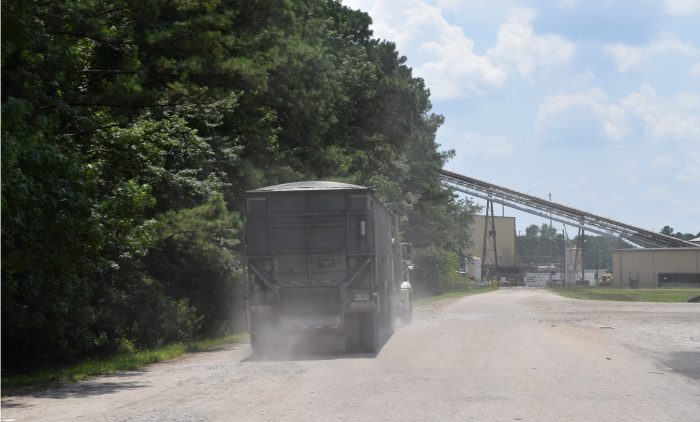Active Energy group noticed for illegal discharges from toxic site in NC
On behalf of Winyah Rivers Alliance, SELC today notified Active Energy Renewable Power—a subsidiary of the U.K. company, Active Energy Group—that it is illegally discharging unpermitted pollutants into the Lumber River from its property contaminated with toxic solvents in Lumberton, N.C.
“Active Energy has been caught once again illegally discharging pollutants from a toxic site into the Lumber River and its tributaries,” says Heather Hillaker, staff attorney at the Southern Environmental Law Center. “In addition to its present unpermitted discharges, the company still doesn’t hold the necessary permits to operate its proposed wood pellet facility. A lot of concerns remain unanswered about how much pollution would result if the mill starts up and expands, particularly when nearby communities are already burdened by industrial pollution.”
Despite plans to start manufacturing wood pellets at the contaminated site in early 2021, Active Energy does not have the required Clean Water Act permit for its ongoing industrial wastewater discharges and is operating in violation of the law.

Conservation groups seek to stop wood pellet company’s illegal pollution of Lumber River
The company plans to construct a wood pellet mill at the site to turn virgin wood into a coal-like substance called “black pellets,” or CoalSwitch, for export to wood pellet markets in Europe and Asia. Although Active Energy is currently discharging wastewater from the site and will only increase its wastewater discharges with future mill operations, the company holds no permit authorizing either its present or future wastewater discharges.
While the company has repeatedly told investors that it plans to rapidly scale up production to approximately 440,000 tons of black pellets per year once the Lumberton pellet mill is operational, its air permit currently only allows emissions from a 43,800 ton per year operation. Active Energy has not disclosed to either regulators or nearby communities what pollution will be emitted into the air or water from its expanded facility. Residents of nearby communities that are predominantly Native American and African American already are exposed to multiple sources of industrial pollution.
I worry how much pollution this company will end up releasing into the Lumber River.
Jefferson Currie II, Winyah Rivers Alliance’s Lumber Riverkeeper
“Limiting industrial pollution is crucial to keeping the Lumber River clean,” says Winyah Rivers Alliance’s Lumber Riverkeeper Jefferson Currie II. “After we notified Active Energy, it finally secured a stormwater permit for pollution from its sawmill, but the company is still illegally discharging wastewater into our waterways. I worry how much pollution this company will end up releasing into the Lumber River.”
Discharge monitoring reports filed by the company with EPA and the North Carolina Division of Water Resources show unpermitted water discharges of pollutants from Active Energy’s current operations, including suspended solids, nitrogen, zinc, copper, and chromium. Some of these pollutants can harm fish and other aquatic life in the river and lead to harmful algal blooms. The area of the Lumber River immediately downstream of Active Energy’s unpermitted discharges is a state and federally designated Natural and Scenic River due to its unique natural, recreational, fish and wildlife, and cultural values.
Active Energy has 60 days under the law after this notice to stop its discharges from its contaminated property into the Lumber River. This notice letter is the second time the groups have notified the company that it lacks required permits for its current operations.
